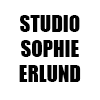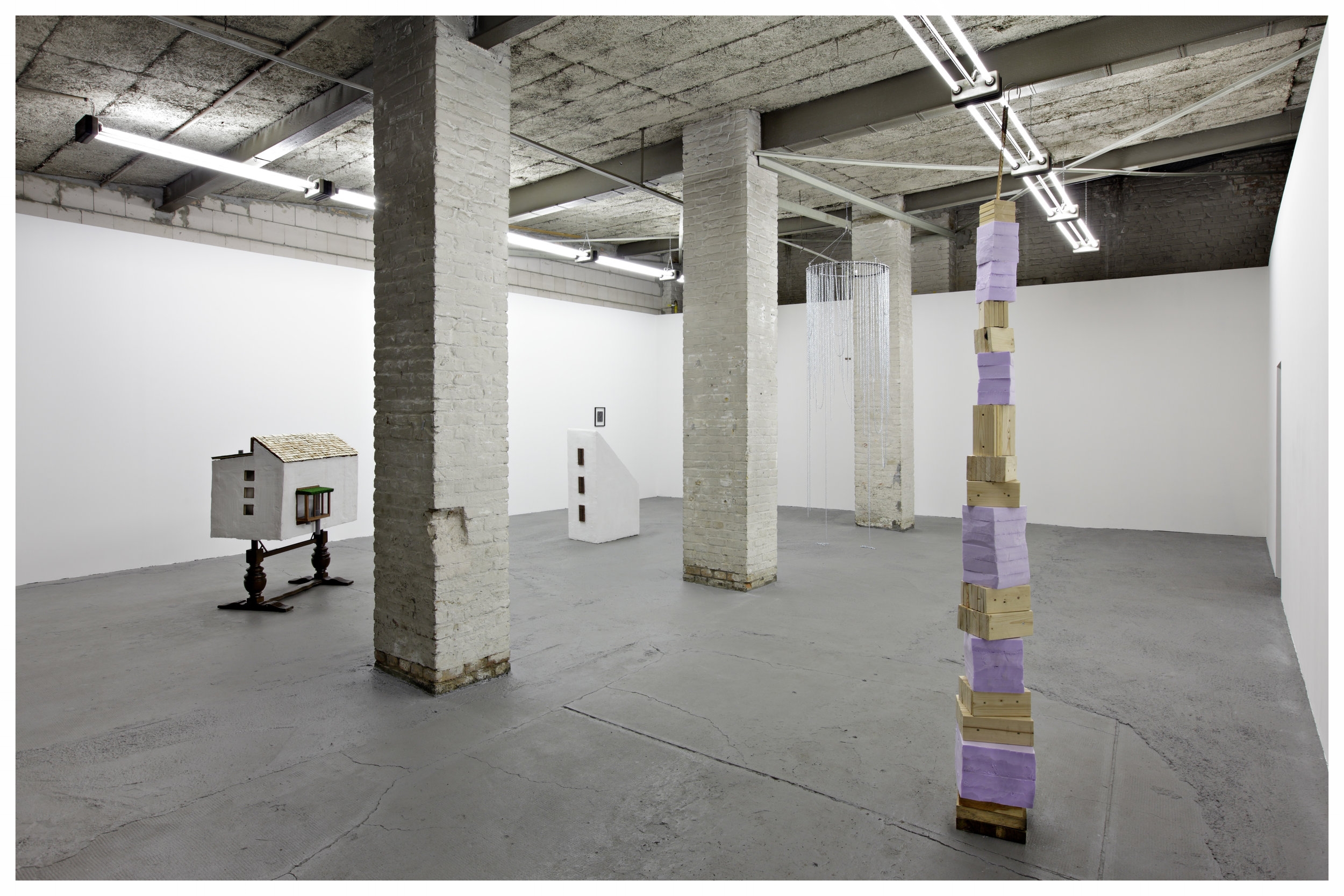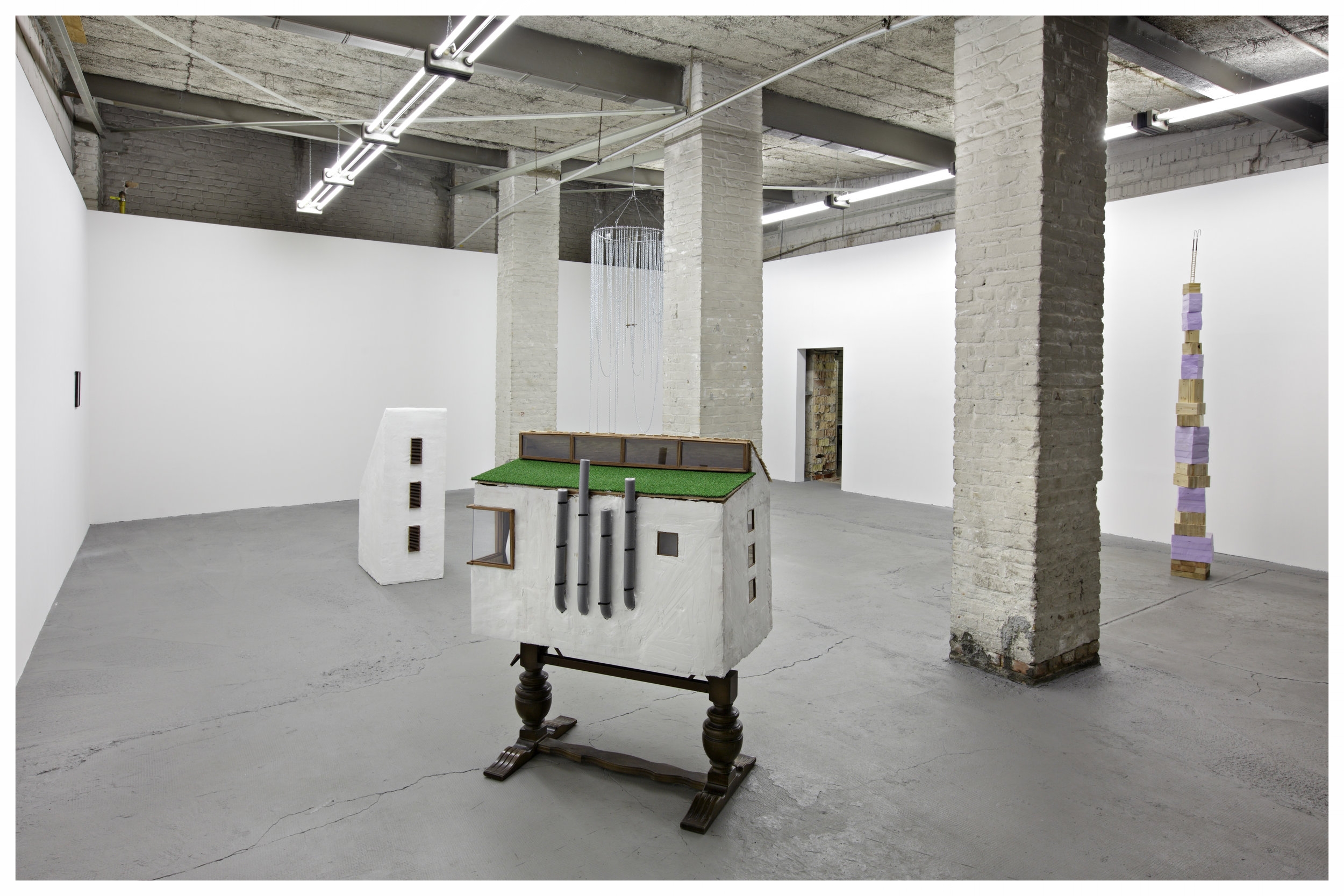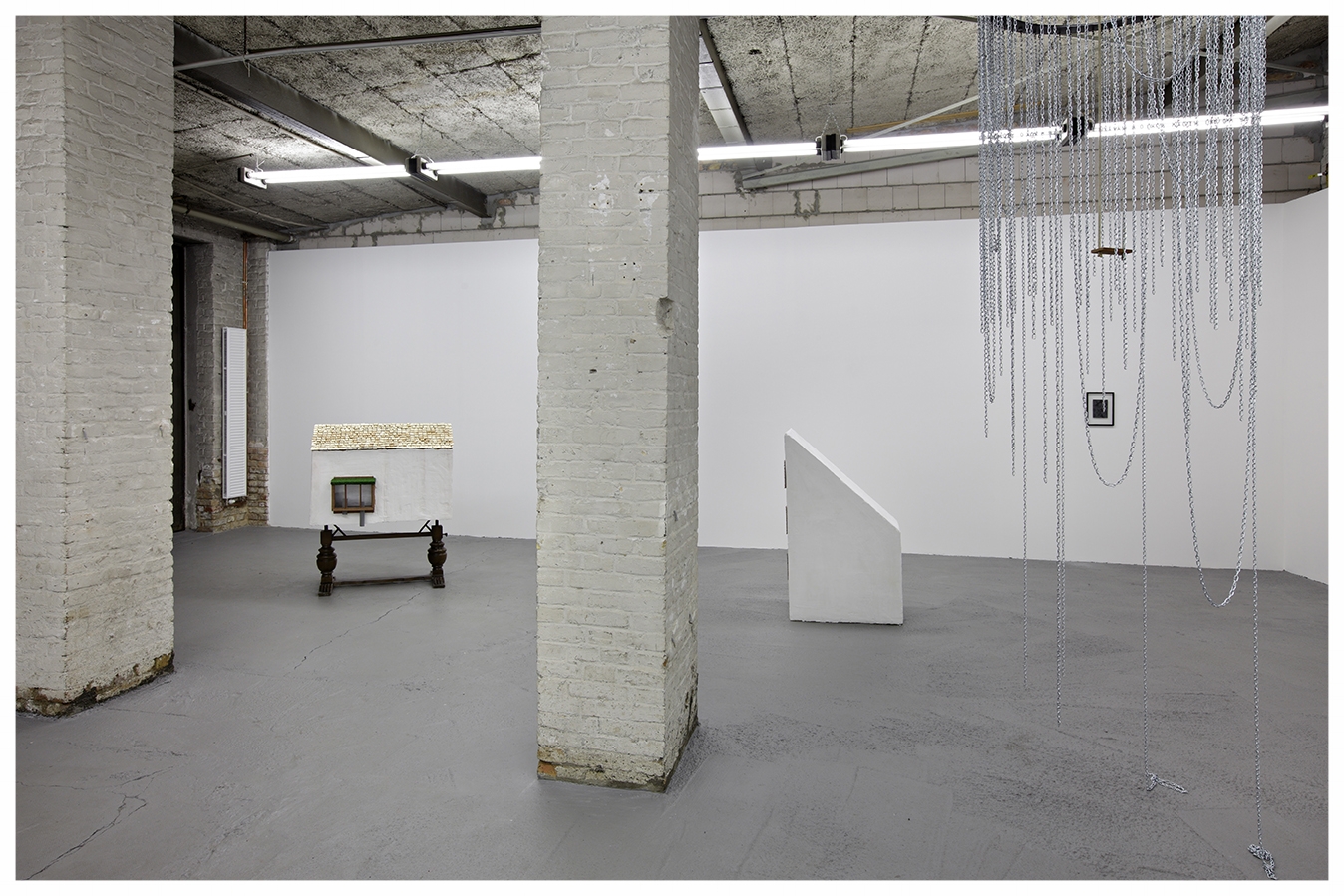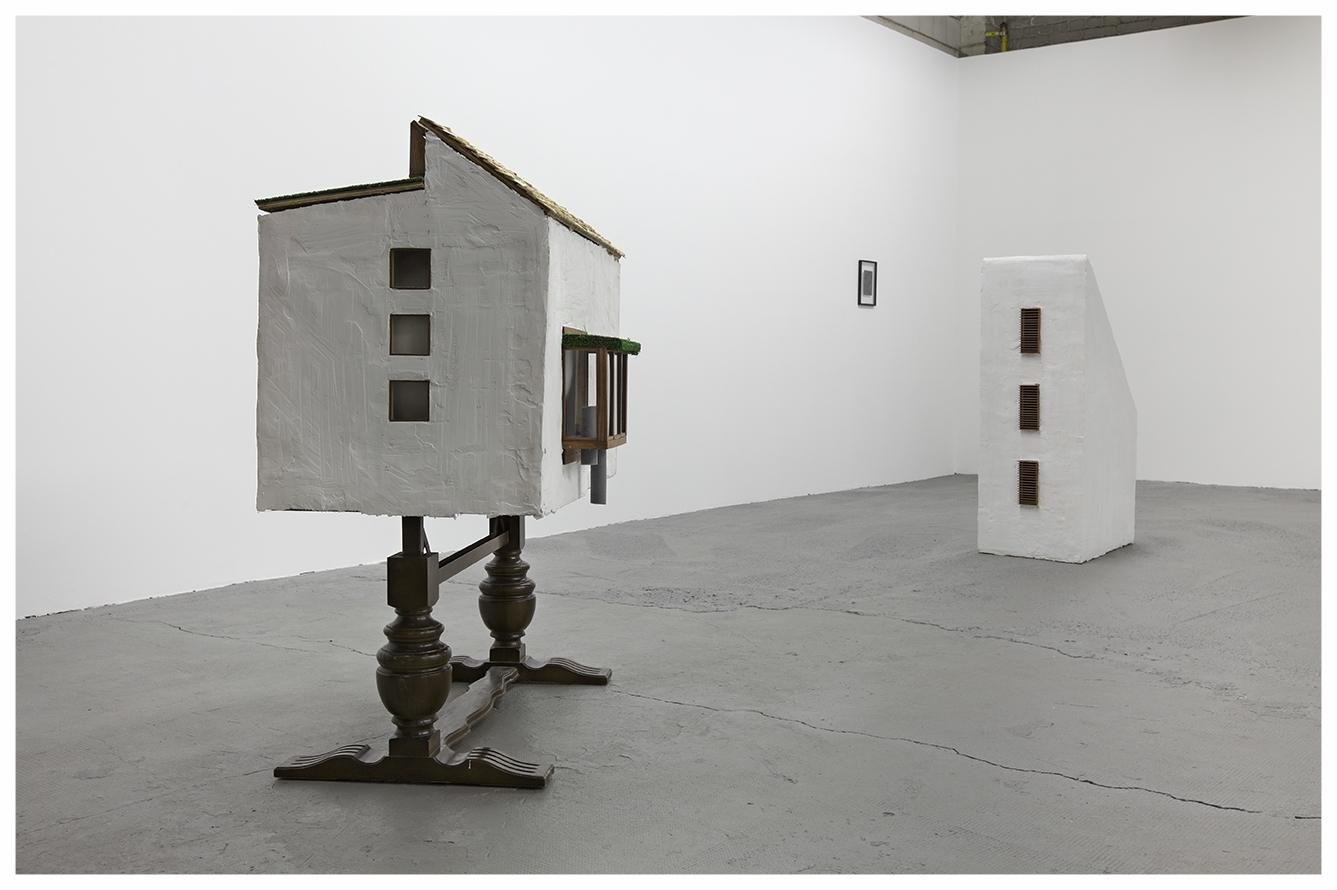Udvandring, 2009
PSM Berlin, de
photo: Hans-Georg Gaul
featuring works:
baby girl, 2009
before baby girl, 2009
Betwixt and between, 2009
Domestic brainscape, 2009
nabo, 2009
The intricacies of chronology and the world to come, 2009
Under the title Udvandring (migration) Sophie Erlund deals with the central theme of transition; transition not only in terms of space, but also as a social issue.
Sophie Erlund was born in 1978 in Denmark. When she was 16, she emigrated to the USA, afterwards to Great Britain, today she lives and works in Berlin. Leaving her home country, the region of her mother tongue, has become a part of her life. Besides the geographical emigration, there is the social „wandering“ from one phase of life into the next as a central theme of the exhibition Udvandring. In 1964 the anthropologist Victor Turner described such transitions of life as Social Dramas, which he divided in three phases: the separation, the liminality (the in-between) and the integration. Sophie Erlund’s conflict with a private social drama depicts especially the phase of the in-between, the conflict between her private role as a woman and her professional position as an artist.
Inspired by buildings of the Danish architect and designer Arne Jacobsen, Sophie Erlund creates the two sculptures Domestic Brainscape and Nabo (Danish: neighbour), that resemble architectural models. The reference to the openess of modern architecture and the reversion of the inside to the outside in the work Domestic Brainscapes opposes to the closed state of the „Neighbour“. Social isolation as a condition of liminality and openess forced by physical transformation form one chapter of the multilayered story told through this pair of sculptures.
In her work Betwixt and between this isolation sharpens. The viewer perceives this feeling through symbols of physical anxiety and visual emptiness. The overall concept of the exhibition has its summarization in the immaterial soundpiece Baby girl. In a plain narration, Sophie Erlund expresses the process of her own conflict to the point of integrative self-acceptance. This process and the conclusion of the social drama become materialized in her work The intricacies of chronology and the world to come, where the transition to a new phase of life is symbolically presented by its evanescent form. Hung seperately, Sophie Erlund identifies the physical disentanglement with the work Chandelier. Corroded threaded rods appear like stiff umbilical cords which, in comparison to the daily utility of a chandelier, do not illuminate but are illuminated.
